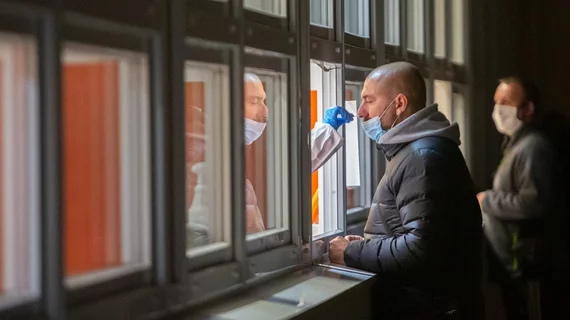For every positive COVID-19 test, radiologists record 1.2 fewer outpatient imaging exams
For every positive COVID-19 test during one recent period, radiologists recorded about 1.2 fewer outpatient imaging exams one week later, according to new research published in Clinical Imaging.
Practices experienced dramatic reductions in patient volumes amid the pandemic’s first wave, with outpatient imaging hit hardest. In a six-week period spanning March through April 2020, weekly outpatient imaging levels were down 57% compared to the same span in 2019, and nearly 90% at its peak.
The analysis—using imaging data from New York-based hospital giant Northwell Health—charted a gradual return to pre-pandemic imaging levels over a three- to four-month period. Experts believe their conclusions offer key clues as practices navigate subsequent stages of the public health crisis.
“Unlike prior prediction models that expected outpatient imaging recovery to be linked to health policy changes and/or national vaccination programs, our study showed that outpatient imaging volume had over 50% return prior to reopening phase 1 when a vaccine was not yet available to the public. Instead, the return of outpatient imaging utilization was associated with the new positive-tested COVID-19 weekly cases,” Jason Naidich, MD, MBA, radiology chair with the Zucker School of Medicine at Hofstra/Northwell, and colleagues wrote Aug. 8. “These findings may help inform radiology practices regarding other contributing factors influencing outpatient imaging utilization during the recovery period,” they added.
For the study, Naidich et al. retrospectively analyzed imaging trends logged by the massive hospital system between Jan. 1, 2019, and Aug. 25, 2020. They separated this period into three phases: pre-COVID (weeks 1-9), peak-COVID (10-15) and recovery (16-34). Outpatient imaging volume totaled nearly 328,000 during the study period compared to 440,000-plus exams in 2019, with a significant decrease in weekly imaging during the peak and recovery periods.
Northwell logged an average weekly decline of 2,580 exams, and the bounce-back landed at 617 scans per week. The post-COVID phase in 2020 (weeks 10-34) witnessed a 36.5% average decrease in imaging exams each week, for a total of more than 120,000. Naidich and co-authors believe this deficit due to delayed or deferred care “raises the concern of potential future negative effects on population health.” Meanwhile, they highlighted a significant inverse correlation between positive COVID-19 tests and imaging utilization with a one-week lag during this phase.
Naidich and colleagues published similar studies last year charting massive declines in imaging visits, and shifts in the socioeconomic mix of patients using radiology services. Siemens Medical Solutions, the Feinstein Institutes for Medical Research and the Harvey L. Neiman Health Policy Institute also contributed to this latest study.

